Viveca Pavon-Harr
Improving Community Resiliency and Emergency Response With Artificial Intelligence
May 28, 2020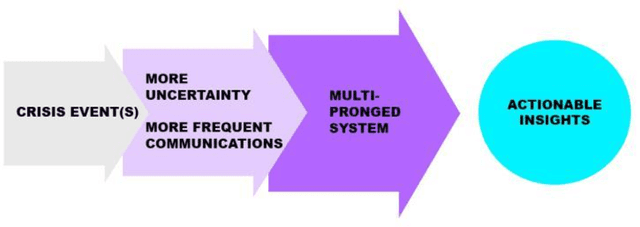
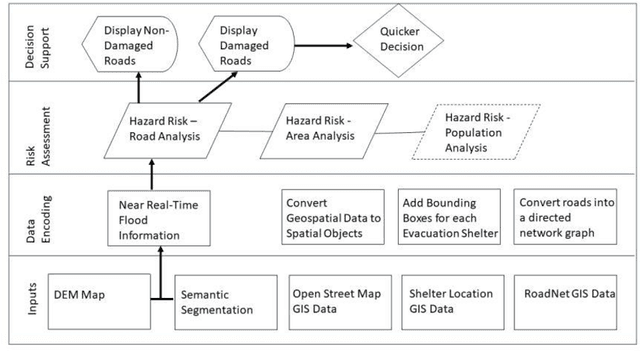
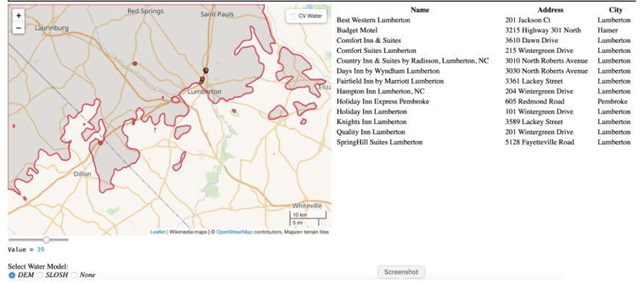
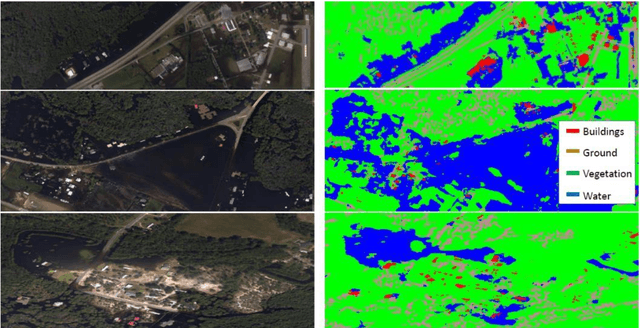
Abstract:New crisis response and management approaches that incorporate the latest information technologies are essential in all phases of emergency preparedness and response, including the planning, response, recovery, and assessment phases. Accurate and timely information is as crucial as is rapid and coherent coordination among the responding organizations. We are working towards a multipronged emergency response tool that provide stakeholders timely access to comprehensive, relevant, and reliable information. The faster emergency personnel are able to analyze, disseminate and act on key information, the more effective and timelier their response will be and the greater the benefit to affected populations. Our tool consists of encoding multiple layers of open source geospatial data including flood risk location, road network strength, inundation maps that proxy inland flooding and computer vision semantic segmentation for estimating flooded areas and damaged infrastructure. These data layers are combined and used as input data for machine learning algorithms such as finding the best evacuation routes before, during and after an emergency or providing a list of available lodging for first responders in an impacted area for first. Even though our system could be used in a number of use cases where people are forced from one location to another, we demonstrate the feasibility of our system for the use case of Hurricane Florence in Lumberton, North Carolina.
Assessing Data Quality of Annotations with Krippendorff Alpha For Applications in Computer Vision
Dec 20, 2019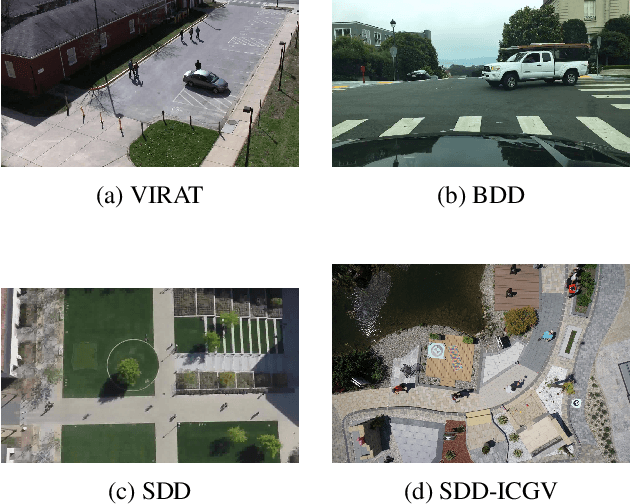
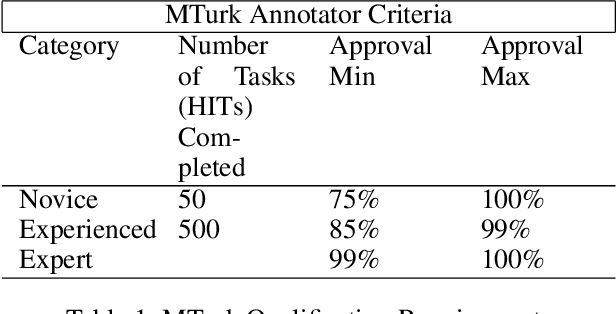


Abstract:Current supervised deep learning frameworks rely on annotated data for modeling the underlying data distribution of a given task. In particular for computer vision algorithms powered by deep learning, the quality of annotated data is the most critical factor in achieving the desired algorithm performance. Data annotation is, typically, a manual process where the annotator follows guidelines and operates in a best-guess manner. Labeling criteria among annotators can show discrepancies in labeling results. This may impact the algorithm inference performance. Given the popularity and widespread use of deep learning among computer vision, more and more custom datasets are needed to train neural networks to tackle different kinds of tasks. Unfortunately, there is no full understanding of the factors that affect annotated data quality, and how it translates into algorithm performance. In this paper we studied this problem for object detection and recognition.We conducted several data annotation experiments to measure inter annotator agreement and consistency, as well as how the selection of ground truth impacts the perceived algorithm performance.We propose a methodology to monitor the quality of annotations during the labeling of images and how it can be used to measure performance. We also show that neglecting to monitor the annotation process can result in significant loss in algorithm precision. Through these experiments, we observe that knowledge of the labeling process, training data, and ground truth data used for algorithm evaluation are fundamental components to accurately assess trustworthiness of an AI system.
 Add to Chrome
Add to Chrome Add to Firefox
Add to Firefox Add to Edge
Add to Edge